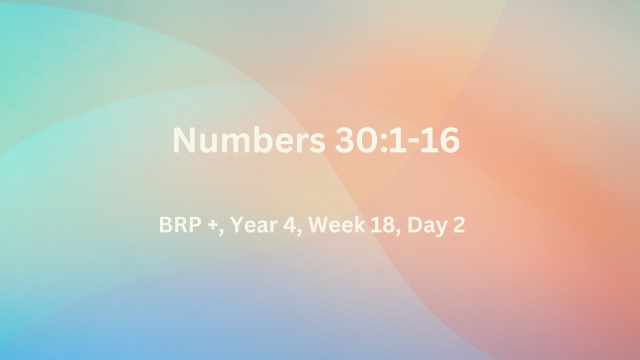Numbers 29:1-40
Q.1. How did the Feast of Trumpets prepare the Israelites for the Day of Atonement? How was it celebrated? – (Num.29:1-6)
The first three festivals took place in the first month, and Pentecost fifty days later in the third month (c.f. Num.28:1-31). Then followed a long break, when every devout Israelite awaited the Day of Atonement in the seventh month. This was the time when atonement was made for their sins (Num.29:7-11). Ten days before the Day of Atonement, the Festival of Trumpets was celebrated, in order to prepare for this significant day in the annual calendar (Num.29:1-6 c.f. Lev.23:23-25). Israel was to cease from normal labour and gather at the Tabernacle. Here animals without defect were sacrificed, and offerings were brought before the Lord. The people would reflect on their condition prior to the Day of Atonement when the ledger would be squared.
Q.2. What made the Day of Atonement so important for the nation? What did it involve? – (Num.29:7-11)
The Day of Atonement pointed to the perfect sacrifice of the ‘Lamb of God Who takes away the sins of the world’ (Jn.1:29). It meant guilty, death-deserving sinners could maintain their relationship with a holy God (Num.29:7-11 c.f. Lev.23:26-28). Leviticus devotes a whole chapter to explain the substitutionary sacrifice by way of a scapegoat (literally an escape goat). Two perfect goats were chosen – one for God and one for sinners – 8 Aaron shall cast lots for the two goats, one lot for the Lord and the other lot for the scapegoat. 9 Then Aaron shall offer the goat on which the lot for the Lord fell and make it a sin offering. 10 But the goat on which the lot for the scapegoat fell shall be presented alive before the Lord, to make atonement upon it, to send it into the wilderness as the scapegoat … one male goat for a sin offering besides the sin offering of atonement … (Lev.16:7-10; Num.29:11). The High Priest entered once a year into the Holy of Holies, with the blood of a bull and a goat (c.f. Lev.16:13-17; Heb.9:7). This gave the Israelites hope, and a way of escape – Now you shall have this as a permanent statute, to make atonement for the sons of Israel for all their sins once every year (Lev.16:34).
Q.3. When were the people of Israel to celebrate the Feast of Booths? What was involved and what did it signify? – (Num.29:12-39)
A few days after the Day of Atonement, Israel was commanded to celebrate the Festival of Tabernacles or Booths for seven days, with generous sacrifices and offerings. Each day required two rams and fourteen male lambs, plus thirteen bulls on day one, then declining by one to seven bulls … all without defect (Num.29:12-39). This festival would have been enjoyable for the families of Israel: (i) The Day of Atonement had given them all a fresh start; (ii) It took place after they had completed the harvest (c.f. Lev.23:39); (iii) It was accompanied by a family celebration that lasted a week, as the nation lived in leafy booths made from palms and willows (c.f. Lev.23:40). The children would have loved it – 42 You shall live in booths for seven days; all the native-born in Israel shall live in booths, 43 so that your generations may know that I had the sons of Israel live in booths when I brought them out from the land of Egypt. I am the Lord your God.'” (Lev.23:42-43 c.f. Lev.23:33-44). This festival will continue throughout the Millennial Reign of Christ (Zech.14:16-19 c.f. Ezk.43:13-27).

